Ah, February. Your bite may be sharp but aren’t you beautiful? Alder Carr, 12 February 2024
Hello, and a warm welcome to this February Full Moon edition of Bracken & Wrack.
Remember the time a year or two ago when we were designing our own names for the Moons according to what we could see, feel or sense around us each lunar month? Well, I have to say that I would have to go for Mud Moon this time :-) The lanes here are awash with it, and not just at the edges but in a squelchy strip right down the middle too. And footpath walks become, shall we say, ‘fun’ to negotiate.
But that’s all part of the season, and actually I really love sinking into it (well, not literally!) and finding joy in each kaleidoscopic change as the cogs turn. For me, a lot of it is in the colour and there’s something about February’s hues that goes a long way towards making up for the chill.
Close to the Otter Stream, 4 February 2025
Soon - on 15 February - Old Candlemas Day will be with us again. I always feel this is the moment in the annual round where the difference between Old and New calendars is most keenly felt. After all, the time of Candlemas/Imbolc traditionally marks the very beginning of the spring when the land is stirring and the birds begin singing more vividly. But it it must be said that when you step outside at the very beginning of February, that feeling can be hard to sense.
I love to mark the Old (Julian Calendar) festival dates, partly because they give you a second chance to celebrate if you’ve missed the present-day date, but mostly because they hold a wealth of ancestral wisdom for us to unwrap and ponder and, yes, FEEL.
After all, 1752 when the calendar changed isn’t so very long ago; the blink of an eye within deep time. Constant time-slip since then means that we are now thirteen days adrift, and thirteen days is a long time in the unfolding of the yearly cycle.
We have our medieval ancestors to thank for a wealth of folk-practices and weather lore, and it’s easy to forget that in their day, humans and all other beings would have been looking out into a world where the patterns of nature were thirteen days more advanced than they are now. This explains why, quite often, hawthorn blossom opens around 12 May, Old May’s Eve.
The Badger peeps out of his hole on Candlemas Day and when he finds snow walks abroad, but if he sees the sun shining he draws back into his hole - German country lore
And, of course, the badger looking out of her hole to divine the weather for the spring was doing so on this very day.
As I wrote on Old Candlemas Day 2022:
‘So on this soft grey afternoon I lit my Mermaid’s Head candle and placed it on the damp mossy earth to illuminate the nodding snowdrops that line the woodland track, crouching on my haunches to breathe in the scent of Old Candlemas. The badger would definitely have retreated to his hole to hibernate a little longer.
The previous year it had been a very different story, as the cottage’s resident Sprite Childe and Frog will tell you.’
Sprite Childe in the front garden, 9 February 2021
Since then I’ve discovered more Candlemas lore that perhaps starts to put the timing of the festival further into perspective.
As a Christian festival, Candlemas traditionally marked the day of the presentation of Jesus at the temple and is thought to be one of the oldest feasts of the Church, both Eastern and Western. The blessing of candles to ward off all kinds of evil has links with this event but also is reminiscent of many ancient European fire and spring festivals. These often revolve around ideas of fire; of coaxing back the warm sun and the balmy days of summer, a tiny flame as sympathetic magic against the chill. Perhaps that’s why we feel drawn to it today.
Mermaid’s Head candle in Dancing Bear Wood, 15 February 2022
But although this time has become a well-established station in the Wheel of the Year as one of the cross-quarter days (Major Sabbats in Wicca) it was actually only known as a seasonal festival in Ireland, where the names Imbolc or Imbolg originate. There, the mild Atlantic climate makes the beginning of spring feel much earlier than on the British mainland and in the rest of north-western Europe where ice often reigns at this time.
Interestingly, it’s likely that various regions around the Mediterranean had similar fiery customs, since, in the early seventeenth century, Pope Innocent XII is recorded as having said of Candlemas:
‘Why do we in this feast carry candles? Because the Gentiles dedicated the month of February to the infernal gods, and as at the beginning of it Pluto stole Proserpine, and her mother Ceres sought her in the night with lighted candles, so they, at the beginning of the month, walked about the city with lighted candles. Because the holy fathers could not extirpate the custom, they ordained that Christians should carry about candles in honour of the Blessed Virgin; and thus what was done before in the honour of Ceres is now done in honour of the Blessed Virgin.’
One ancient festival we know plenty about is Lupercalia, rough and visceral Roman festival of ritual sacrifice, feasting and purification that took place annually on 15 February. Bearing in mind that the Church tradition of blessing the candles for the following year amounts to purification, can the date really be coincidental?
My mind wanders too to the fiery sunrises and sunsets that seem especially vivid at this time of year, all the more so against the bleached landscape and pale February skies. It’s a good moment to catch a sunrise over the sea if you can.
Sunrise at Hemsby, Norfolk
In this issue of Bracken & Wrack:
Coaxing Back The Sun: musings on Candlemas
Fen Bride: a Valentine’s Special
A Fenland Wedding: Bride-lore
Poetry by Edward Thomas & Hilary Llewellyn-Williams
Crossing The Bridge: Old Glory at Imbolc
Old Glory’s Warming Carrot & Butter Bean Soup: a recipe
(Above: audio version of the poem - press play.)
Over the land freckled with snow half-thawed
The speculating rooks at their nests cawed
And saw from elm-tops, delicate as flowers of grass,
What we below could not see, Winter pass.
Edward Thomas, ‘Thaw’
Lambs tails at Pigney’s Wood, Knapton, Norfolk
FEN BRIDE: A Valentine’s Special
If you’ve been following Bracken & Wrack for a while you’ll know of my occasional series about 1930s Fenland customs, gleaned from Poultry, Plums and Fen Runners, my mum’s childhood memoir. Recently I found some paper-clipped typewritten pages written when I was 20 years old. I had been brazen enough to show some of my writing to the managing director of the PR agency where I worked as a junior secretary. Luckily he liked what he saw and amazingly I was invited - and even paid - to write articles for some of the (very cheesy to our eyes now) free magazines they produced. The extract I’m drawing on here comes from the first piece I wrote for them, in which I talked with my grandma Mabel Ashmore about her early life. Mabel died in 1987 aged 90, so now I really treasure those direct quotes that transport us like nothing else into the Fenland world of more than 100 years ago.
In the interview, Mabel talks about her childhood at Colne Fen Farm near Chatteris, farm life, her time ‘in service’ and more. Given the time of year though, I thought we should gather a few words from the original article and begin with a little romance.
‘Can you imagine writing to your future husband every week for four years and three months, and not seeing him once during that time? Mabel Barrett and her sweetheart Holley Ashmore were both 17 when the First World War broke out and Holley joined the army. Other girls would have made the most of their age, but Mabel says: ‘There were several of the chapel boys who wanted to be more than friendly, but I wouldn’t. I said no, my boy is away at the war, and what happens afterwards I shan’t know, but while he wants me I’ll keep true to him.’
The Barrett family were Baptists and great chapel-goers; it was through the chapel that Mabel met Holley. Every Sunday evening, Holley had to walk home with his sister Marjorie, but one particular week he asked her to walk home with some of her friends because he was going to see Mabel back to the farm. That was how it started: a romance that lasted nearly 70 years.
Then war broke out.
One Sunday evening after chapel, Holley told Mabel that he was going to join up the following day, and he gave her one of her most treasured possessions, a birthday book with ‘forget-me-not’ embossed on the cover.
Mabel wrote faithfully every week, whether or not she received a letter. Sometimes she would hear nothing for a couple of months, and then get four or five letters all together. She pored over the photographs of pyramids and camels, and Holley’s descriptions of Egypt and Palestine. It seemed like another world from the sleepy fen that was her home. At the same time, for her war effort, Mabel was writing regularly to her brother Reg and five other boys from the chapel. Only Reg came back alive.
Then, over four years later, Mabel received a letter from Holley to say that he was coming home.
‘I wondered if he’d still want me after four years. He’d never met my parents or been to the farm but he knew where I lived, of course. One of my jobs on Monday mornings was to clean all the family’s Sunday boots outside the back door, and I had just reached out to pick up another boot when I heard a footstep. I looked up, and there stood a soldier. You can guess how I felt. Well, I don’t know how I did feel, but I remember rushing in to tell my parents.’
As Mabel speaks, face alight and animated, she is 21 years old again and back in the Fens.’
And so, reading this again, was I.
Holley and Mabel Ashmore on their Fenland wedding day, September 1922
A FENLAND WEDDING: bride-lore
Did you know that if you pare an apple without breaking the peel and throw the paring over your left shoulder it will form the initial letter of your future wife or husband? I remember my own Fenland mum showing me this one and it’s confirmed in ‘Cambridgeshire Customs and Folklore’ by Enid Porter, from where I have gleaned all this bride-lore.
Let’s see what else we need to know:
A Cambridgeshire charm to divine the name of your future wife or husband required you to put a two-leafed clover into your right shoe and repeat:
A clover of two, a clover of two
Put it into your right shoe
The first young man (or woman) you meet
In field, street or lane
You’ll have him/her or one of his/her name.
May weddings are held to be unlucky
If a thunderstorm occurs during the wedding service the couple will have no children.
To see a chimney sweep on the way to or from the wedding service is a lucky omen. In the past, the presence of a sweep in the churchyard, perhaps even to kiss the bride, was sometimes pre-arranged to confer good luck on the marriage - on at least one occasion by the gift of a shilling and a gallon of beer :-)
March and September are the luckiest months in which to marry, and if the harvest moon shines on the bed of a newly-married pair it ensures a long and happy life for both of them.
A flea found in the marriage bed is an unlucky omen as it must have been placed there by a jealous ex-lover of either bride or bridegroom. ‘It will lead to arguments in the morning with each accusing the other of being unfaithful before the wedding’ - well, yes.
Fenland marriages were occasions for much drinking (though not in my mum’s family I must say as they had taken ‘the pledge’ and were more or less teetotal). When the time came for the bridal couple to retire to bed they were taken outside and given generous quantities of spirits, having been plied with alcohol all evening. Then someone would shout ‘off’, and the intoxicated couple would run staggering to the stairs, a watcher having previously hidden himself near the bedroom. Oh what fun :-)
Until the middle of the nineteenth century it was the custom for a Fenland bride to embroider a cross, as soon as possible after the ceremony, on her husband’s wedding smock. This was wrapped in paper and put away until his death, when he would be buried in it.
Directly passed-down oral history relates that brides used to knit candles into the borders of their bed covers to ensure a happy married life. I wonder how that worked with the laundry?
Another passed-down folk practice relates that old women used to tell young couples to watch their bedroom candle carefully after it had ben blown out on their wedding night. If the tip of the wick glowed red, all was well. If no red glow was seen this showed that either the bride or the bridegroom had been unfaithful to the other before the marriage (probably not a great start to a night of passion).
The mother of an engaged girl would, if she saw a candle flame divide into two as it burned, take this as a sign that the wedding arrangements should be begun, provided that her future son-in-law was willing. If she thought her daughter’s courtship had gone on long enough she would cut a candle wick down the centre and draw attention to the flame when it was lit. As Enid Porter says, ‘Brave would be the young man who dared to ignore such a hint’!
Poppyhead cast in wax: part of an art project for Candlemas in Wood Dalling church which has seen myriad weddings through the centuries. And perhaps a little fertility magic too?
That was a strange, rare place, in a loop
between river and nippled hill
with a crooked sandstone church and trees
that corkscrewed, and a massive leaning yew
one thousand years thick, peeled rosy flesh
and a woman carved into the north wall
with legs agape, and a man with a bird’s head
whistling sorcery. The ground rose
in hummocks: the past, carelessly buried,
trying to break through. Snowdrops showed white
and wet below the mound. I stood at the cusp
of spring in a flayed landscape
bleached-out by frost, stripped clean
Hilary Llewellyn-Williams, ‘The Bee-Flight’ (extract)
Snowdrops by the ruined church at Mannington, Norfolk, 9 February 2025
CROSSING THE BRIDGE: Old Glory at Imbolc
You’ll like Locks Inn, it’s very special, you’d assured me - and I knew you were right. Everything you’d ever told me, every mention of the pub I’d ever heard elsewhere, pointed to its magic. Talk about liminal. The Locks Inn is right out on the marshes, isolated, on the way to absolutely nowhere. Sometimes it was closed for weeks, or even months, when floods covered the causeway leading to its broad wooden doors.
Then there was the music, and the dancing. Folk nights, storytelling, bands, Sunday afternoon sessions. And as the ultimate draw, it was the spiritual home of the Old Glory Molly dancers. As a side who trade very much in the liminal, dancing strictly between All Hallows’ and Candlemas (Imbolc) and almost always in the dark, The Locks Inn couldn’t suit them better. Not only does it stand seemingly in the water between earth and sky, but also on the boundary between the counties of Norfolk and Suffolk on the banks of the River Waveney. To take the metaphor even further, the thought strikes me that a lock itself is a liminal pulse-point, giving access from one plane to another.
It was dark when we arrived so I couldn’t get much sense of distances or the lie of the land. Icy with hard-as-iron ridges already brilliantly frosty. Myriad stars sparkled in the blackest of heavens. Here, you could see even the constellations that usually hang elusively low. Here, there was very little between our bodies and the horizon and the stars stretched over us under a vast dome.
Trees, mainly willows, cast twisting reflections on the water on either side of the causeway, its presence revealed only by its sheen. Was it frozen? The tips of my fingers and nose suggested it might well be.
The track was long and stony. Usually every place where it widens would hold a parked vehicle or two but tonight a big crowd was expected and everyone had to walk from a designated car park at the top of the lane. Dark as it was, I could hear a low murmur of voices and make out a faint line of silhouettes, some carrying torches or, I like to imagine, lanterns, towards the stronger sparkle of welcoming lights far in the distance.
Around the side of the pub where a generator hummed and around to picnic tables, candles under paper lanterns and blazing braziers just beyond the flagstoned yard where the dancing was to take place.
Old Glory are moulded from the good farm earth of Suffolk, and Geldeston actually lies on the Norfolk side of the river. So it’s touchingly symbolic that the dancers and musicians approach on foot across the Suffolk marshes to the beat of a slow drum, bearing blazing flares to signal their progress like so many will o’ the wisps or Jack o’ lanterns. The moment their figures can be distinguished from the night and heavy farm-boots can be heard crossing the bridge - and thus the border - is one during which I can’t be the only one to have held my breath.
And then they were among us, treading through the audience, minding their own affairs as only Old Glory can. The band struck up, overcoats were slid from shoulders, and the dancing began.
Time slip? Some of Old Glory outside Geldeston Locks Inn, Norfolk, 1 February 2025
Ah! the dancing, the stamping on the ground to a merry tune to summon and coax the arrival of spring this sharp-as-a-knife Imbolc night. The very last outing of the season for Old Glory. Another gateway, another layer shimmering over the others.
It was so cold by now that you could see the dancers’ breath - Old Glory at Geldeston Locks Inn, 1 February 2025
Those ash-smeared faces, waistcoats and red-and-white neckerchiefs won’t be seen again until Samhain. But then, mark my words, the earth under Old Glory’s feet will remember the rhythm of the dance, our hearts will keep time and the pattern under the plough will come right again.
OLD GLORY’S WARMING CARROT & BUTTER BEAN SOUP
Although I’ve included this recipe with chilly Plough Boys in mind, during recent drizzly days I too have been very much in the mood for cosy warming soups. This one is a staple as I usually already have everything I need in the cupboard so it can just be thrown together. I thought you might like to try it too, while we’re still in ‘soup season’.
Well I say that, but as far as I’m concerned there aren’t many days in the year I wouldn’t count as soup season, in the same way that wood stove season has no definitive beginning or ending :-) As usual it’s a vegan recipe, showing once more how easy it is to make something tasty only with plants (something I wish that more cafes and pubs would realise!)
If you don’t have absolutely everything listed here you can still make a tasty soup, but I definitely recommend keeping a jar of miso in the fridge for savoury recipes like this. A tiny bit is transformative and it keeps forever.
1 onion
2 garlic cloves
2 celery sticks
Small piece root ginger
6 carrots
Bouillon or veg stock cube
1 tin coconut milk
1 tin butter (or other) beans
1 tsp turmeric
Pinch chilli flakes
1 tsp miso paste
Dash lemon juice or apple cider vinegar
Soften onion, garlic, celery, ginger, then add chopped carrots and braise 5 mins. Add stock dissolved in boiling water, coconut milk, chilli, and turmeric and cook 5 - 10 mins.
Add butter beans and cook a little longer before finally adding miso and juice/vinegar to sharpen.
Blend and eat! I toasted a handful each of sunflower and pumpkin seeds as a crunchy topping.
If you try this, do let me know how you get on.
Old Glory’s Carrot & Butter Bean Soup, 11 February 2025
Until next time.
With love, Imogen x
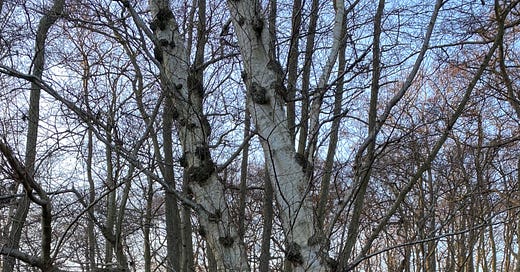



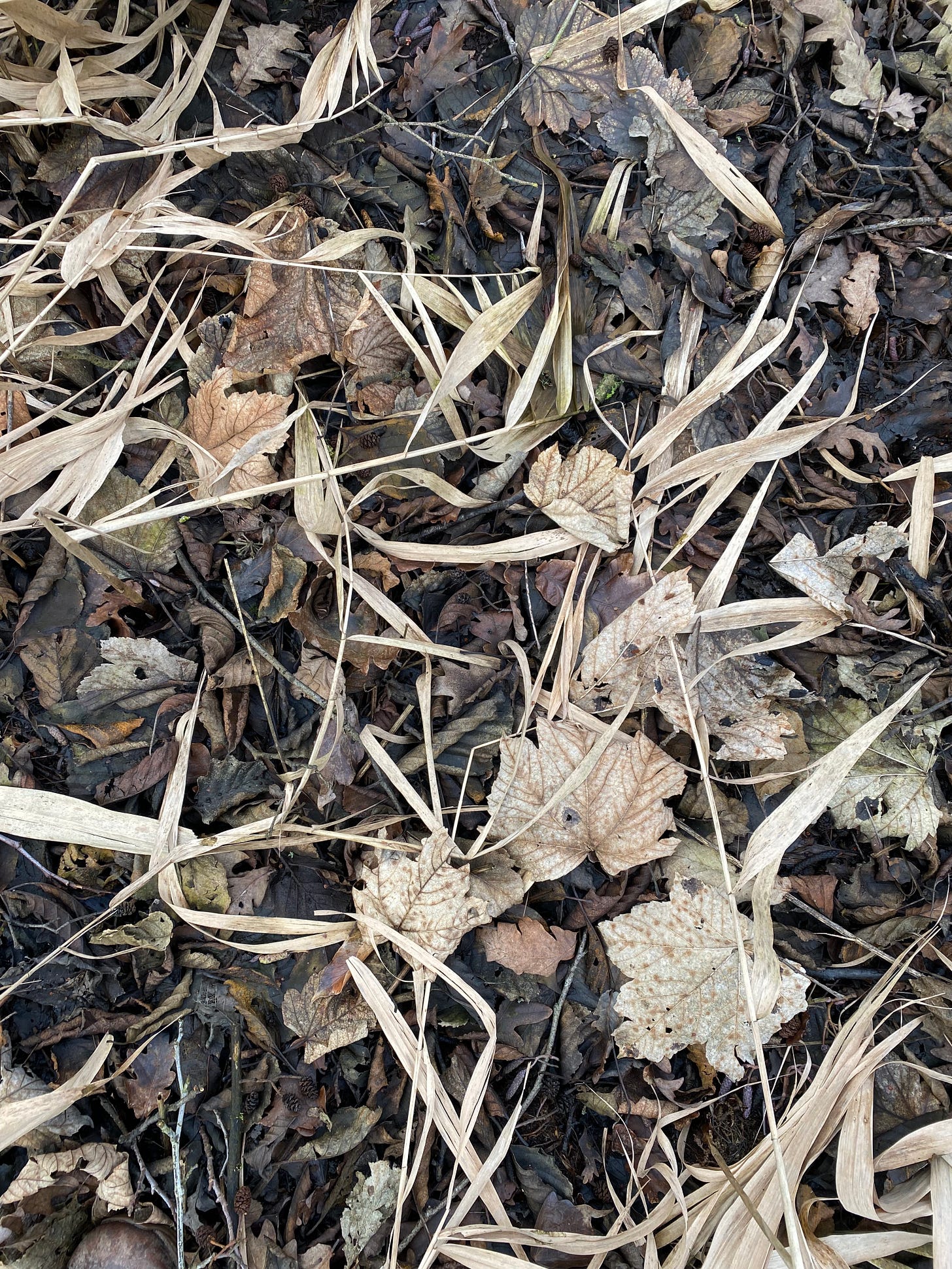
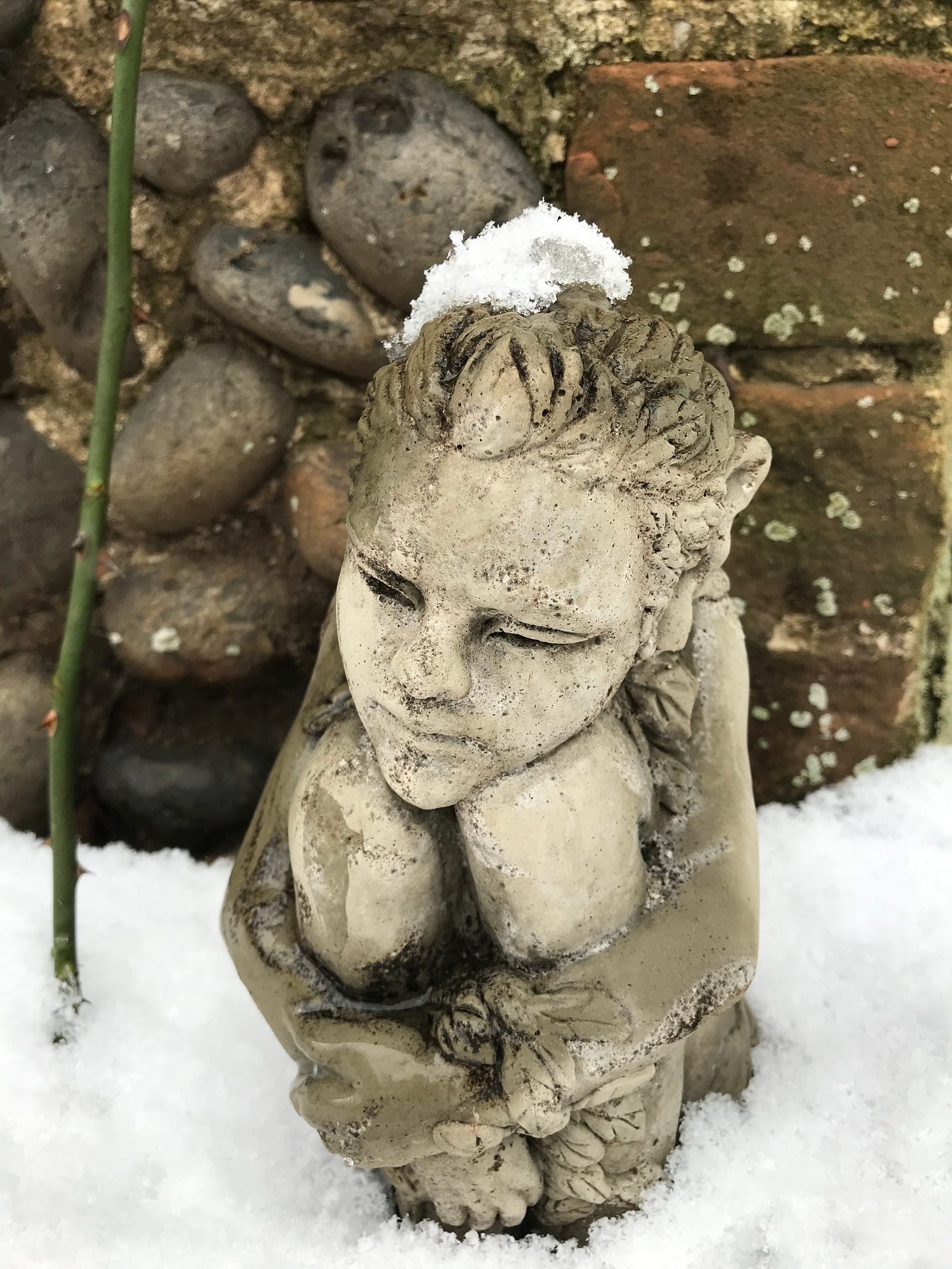
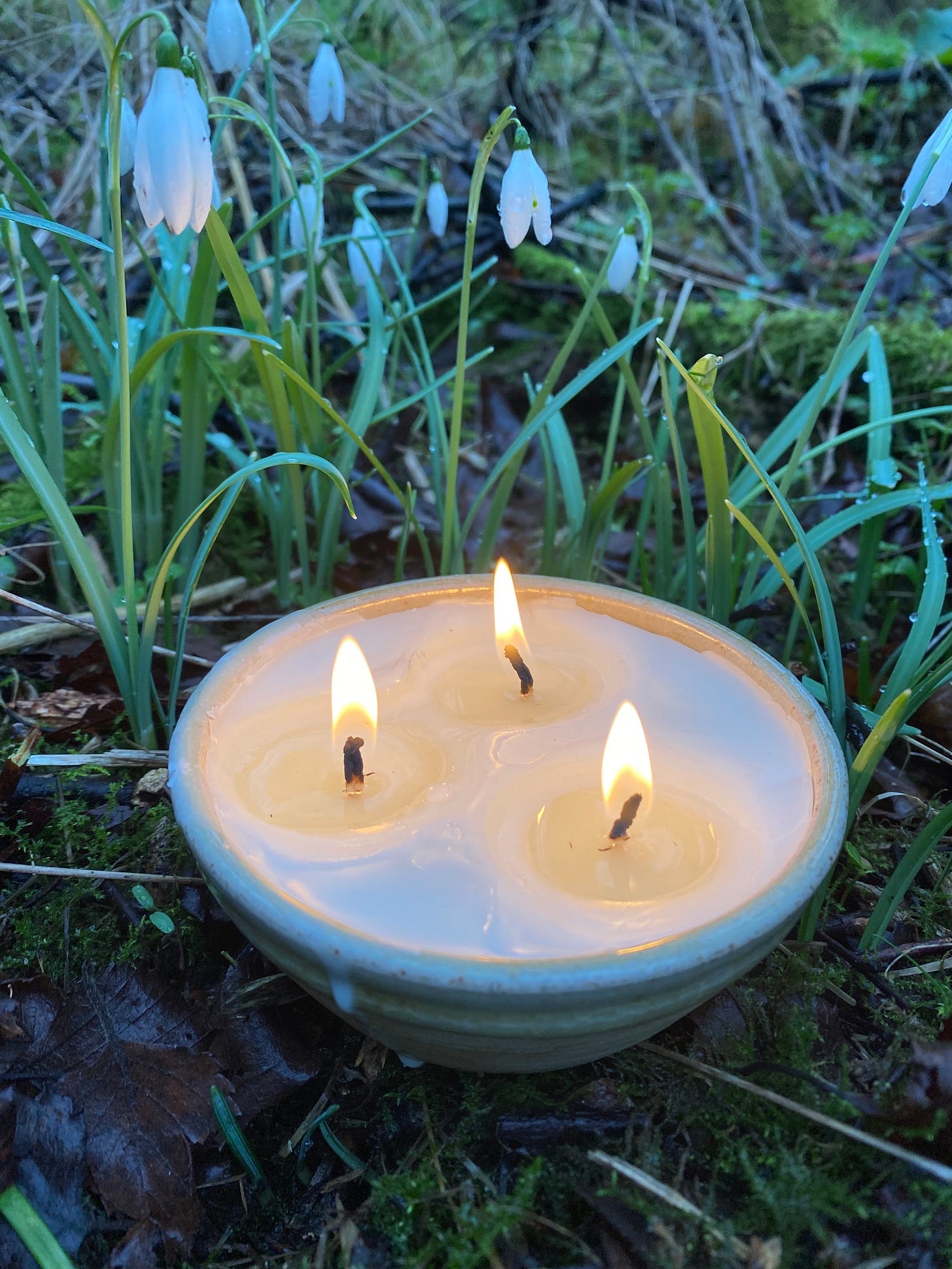
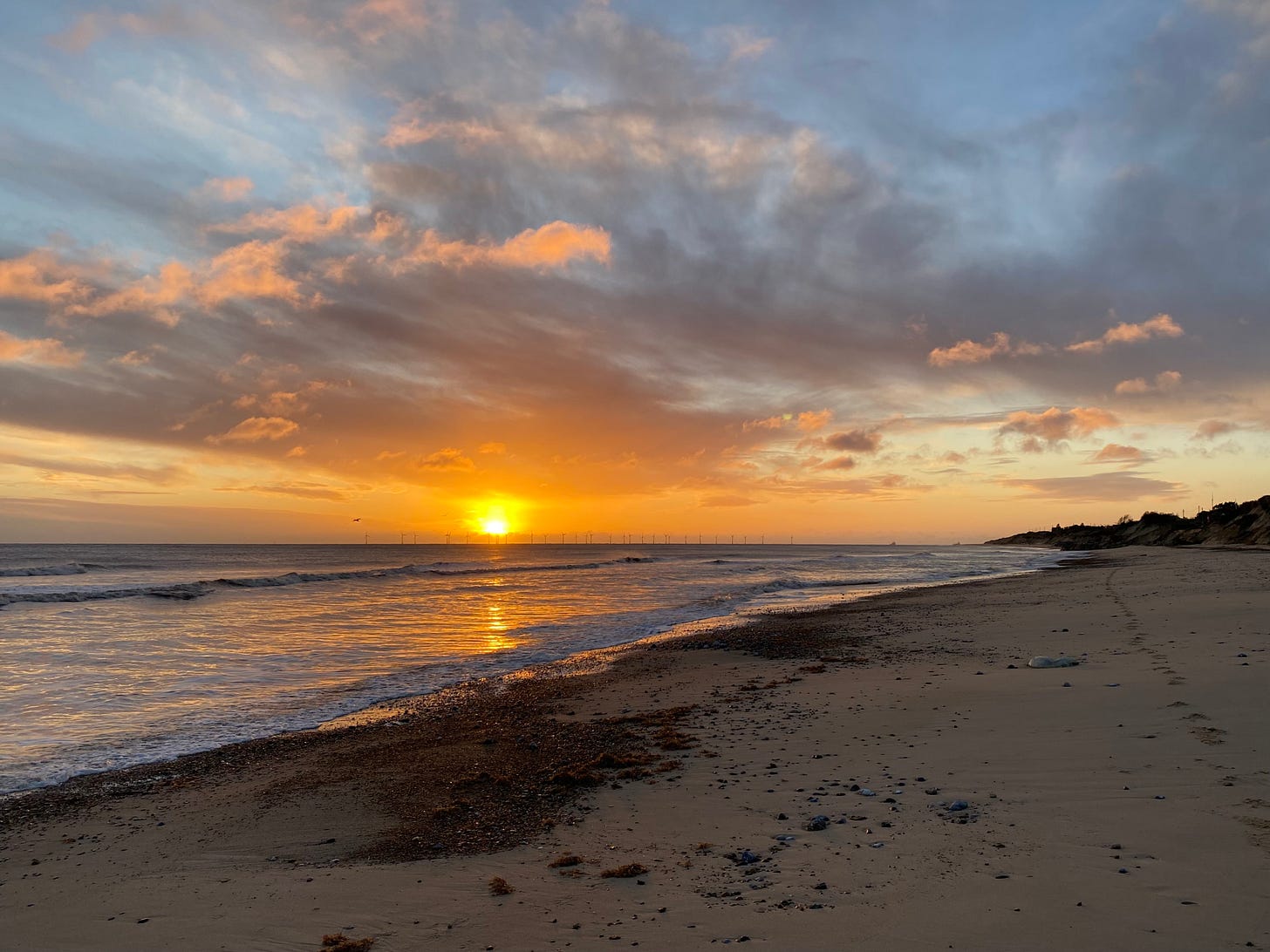
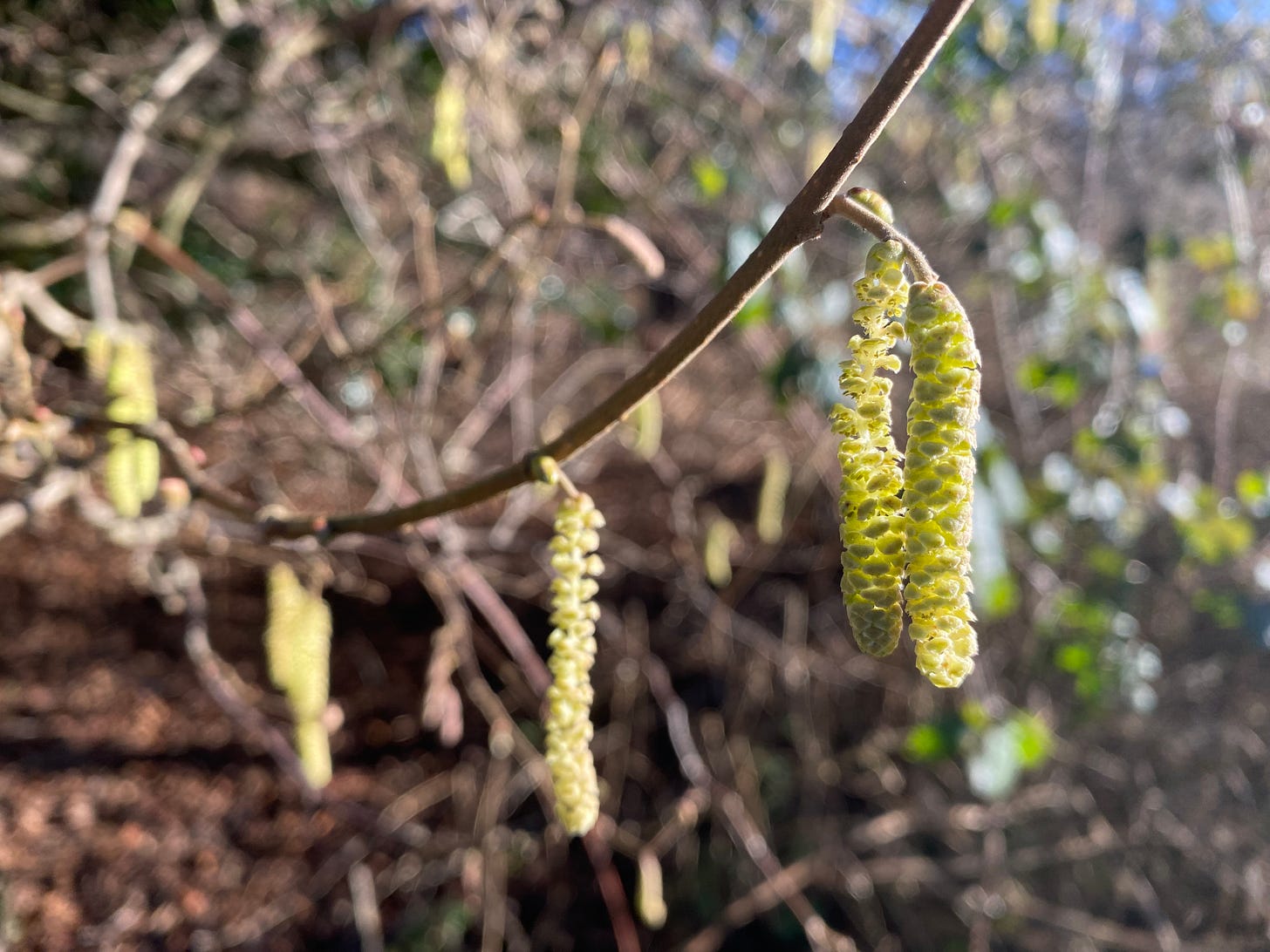
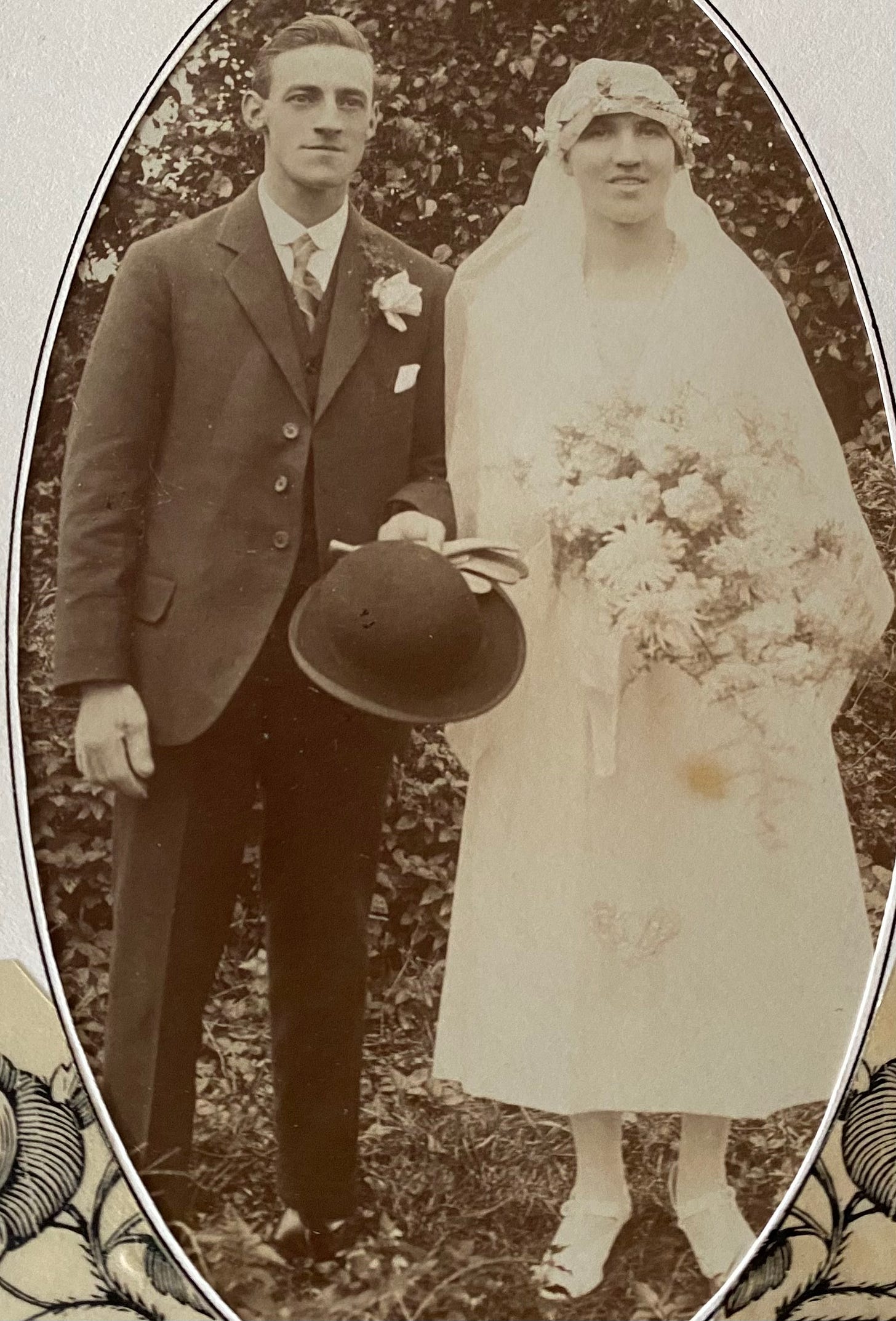

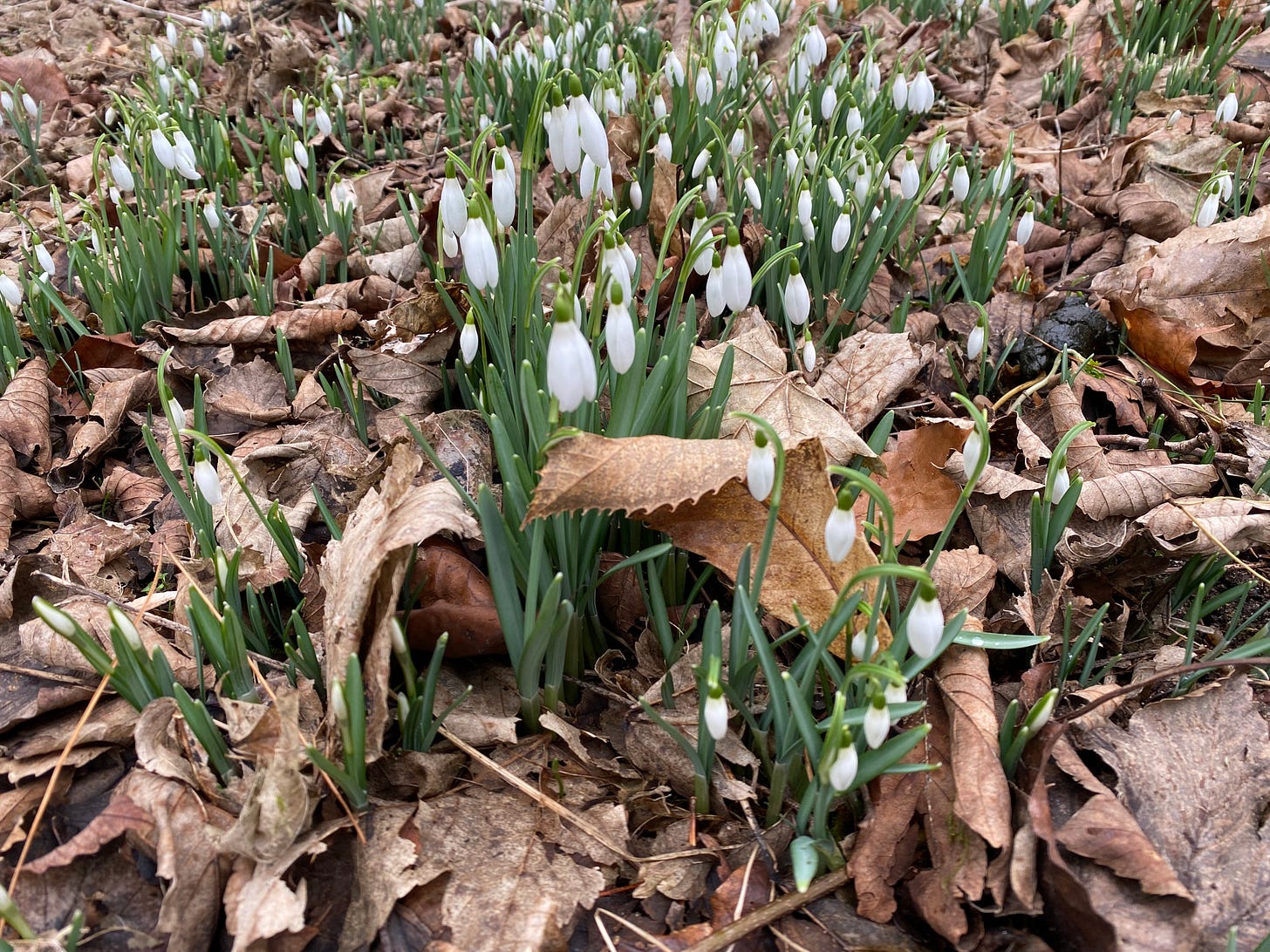
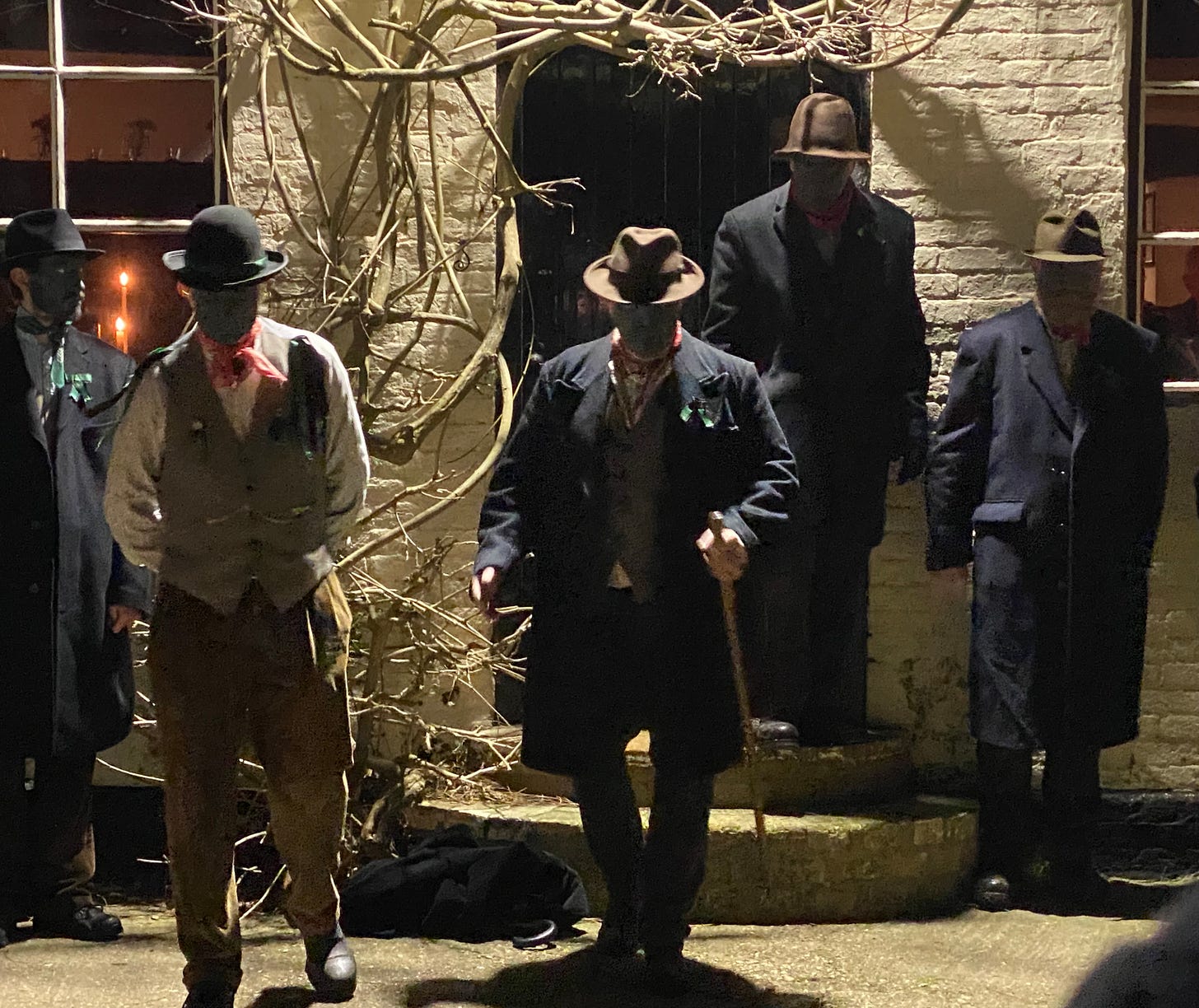
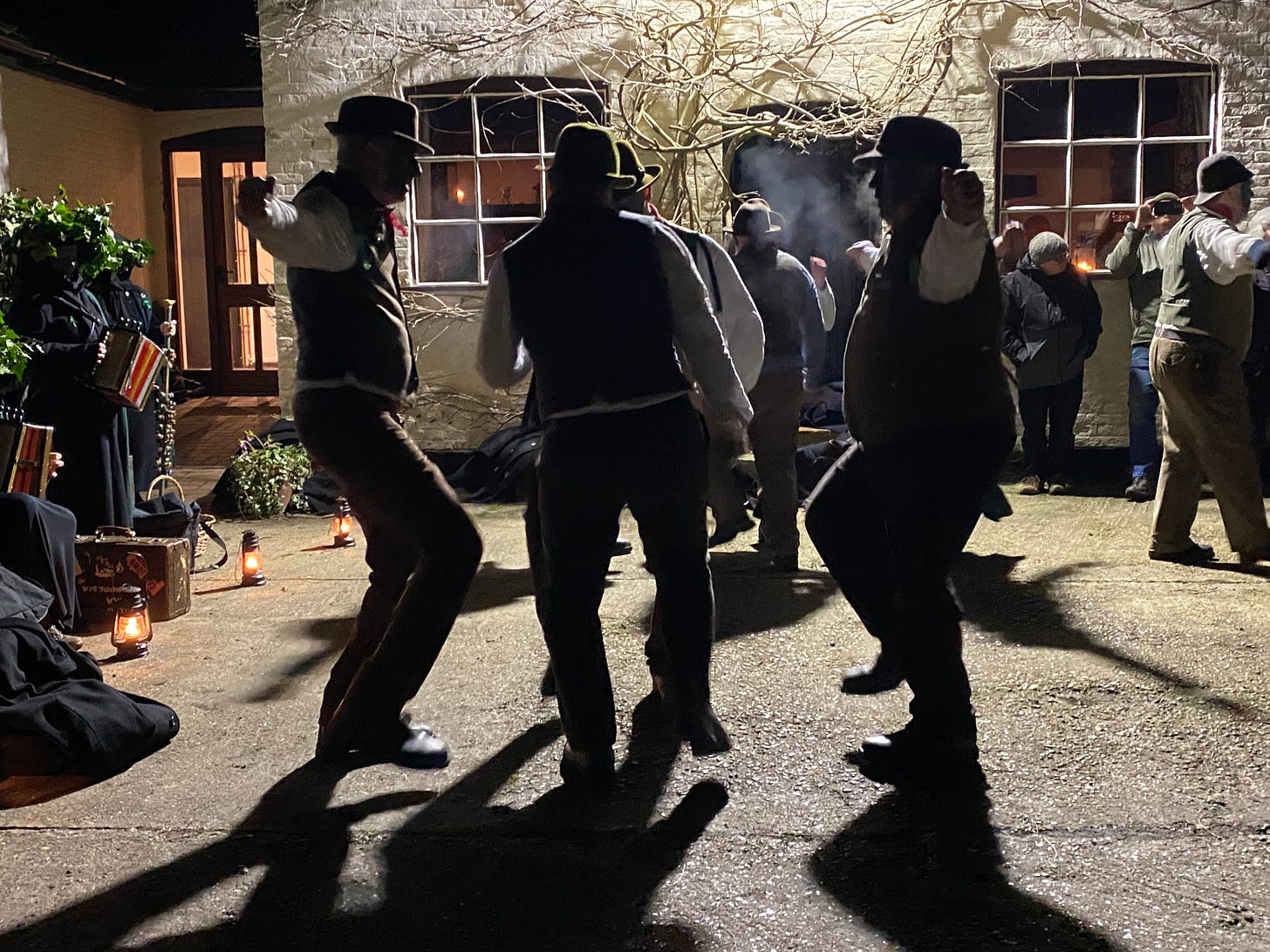
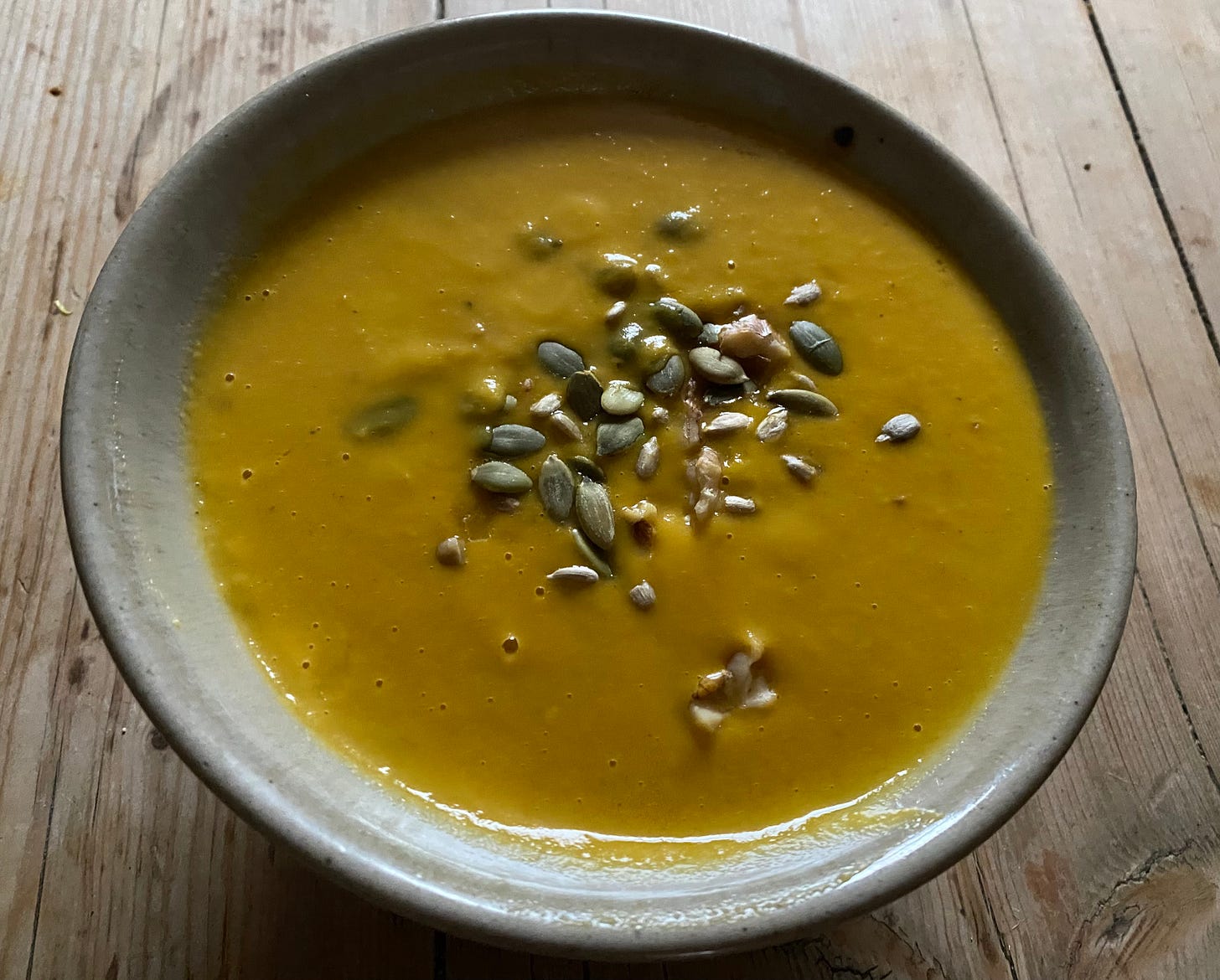
Thank you Imogen. Holley and Mabel 💚❤️
Imogen, what a lovely read for this cold morning ( well it is here in Somerset).
I can definitely see some of you in your Grandmother.
I loved to hear of Old Glory dancing, such a wonderful thing to see.
Your soup recipe interested me because apart from the butter beans , the recipe was almost identical from a soup my mother in law used to make when she was alive. She used lentils instead of butter beans. She said it was a very traditional Armenian soup with coconut milk her modern addition.
It made me think about how many recipes must be repeated all over the world. But of course, Sofrito is used as a base for dishes all over the world and as you rightly said more cafes and restaurants could easily make vegan soups!
Thank you for your posts that open the doorway to our past.